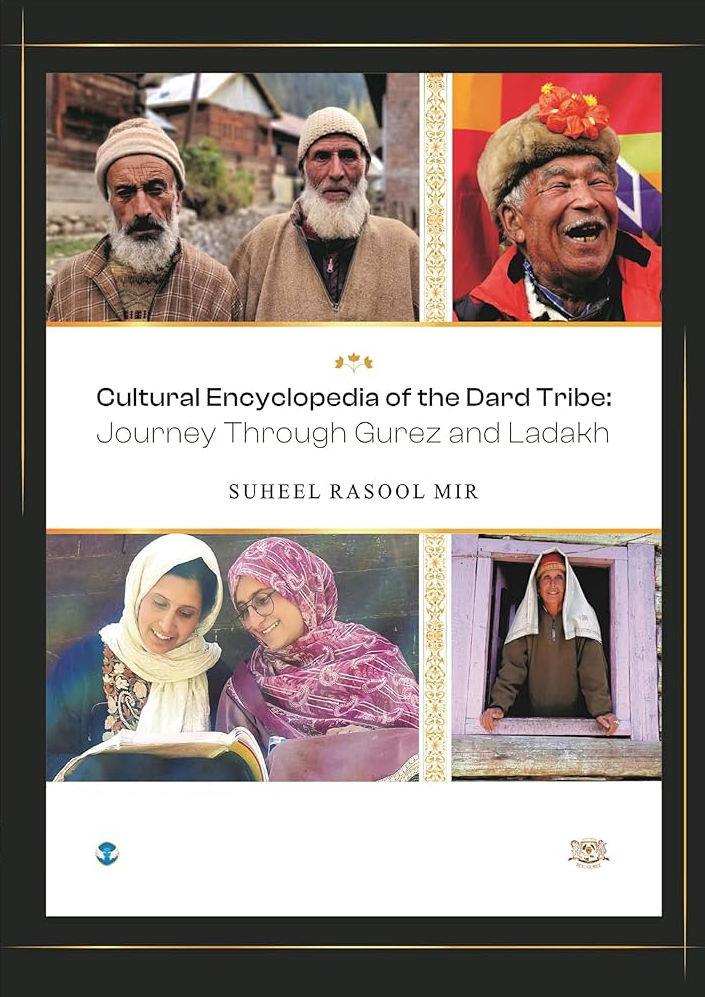BOOK REVIEW
Major ethno-agglomeration of people occurring in the triangle of mountainous area buffeted by the likes of Hindu-Kush, Karakorums and western most Himalayas has been the wont since centuries and is continuing even today unabated. With the emergence of colonization, indigenous communities were subdued, assimilated and their lands were redistributed. Modern states were formed out of this colonization and these areas were divided among various states with new political borders drawn. This redistribution of the population often divided the people of the same ethnicities as ‘citizens’ of different states. This happened in the ‘Abya Yala’, the indigenous name of Americans in the Guna language. It was done in Australia, in the Caucasus and in other parts of the world too.
Such a pre-colonized territory existed in the mountainous crossroads between south and central Asia which is referred to as ‘Dardistan’. This area includes the valleys of four mighty mountain ranges: the ‘Hindu–Kush’ the towering ‘Karakorums’, Pamir and the western Himalayas as mentioned previously. The name ‘Dardistan’ given to this Geo-cultural territory was first applied by the well-known orientalist and Principal of Government College Lahore, Dr. Gottileb Wilhelm Leitner (1840-1899) in his world famous book—‘Dardistan 1861’. ‘Dardistan’ was a zone of immense strategic significance in the ‘Great Game’, a term coined by the first British spy Arthur Conolly, in his story of adventure –‘Journey to the North of India, overland from England, through Russia, Persia and Afghanistan’.
According to Peter Hopkirk’s narration in his book ‘The Great Game 2006’, Conolly was ‘sent to into the field to reconnoiter the military and political no-man’s land between the Caucasus and the Khyber through which a Russian army might march’. Lieutenant Conolly used the term long before Rudyard Kipling gave it an international recognition through his work of fiction ‘Kim’ in 1905 wherein the protagonist Kim says ‘Now I shall go far and far into the north, plying the ‘Great Game’.
Be that as it may, the word ‘Dardistan’ though ancient in both thought and action has been brought alive once again on the mental firmaments of both the scholars and general readers alike by the master piece production of a scholastic piece of work called as ‘Cultural encyclopedia of the Dard tribe: A journey through Gurez and Ladakh’ by Dr. Suheel Rasool Mir. Personally there were two big factors for me to take on the book review of this seminal nature; firstly having served in this area of Gurez valley while in the army and having trekked each nook and cranny of this region way back in the year 2003/04 and secondly to throw light on a subject i.e. the Dard community of which most of the world is ignorant even in this age and time.
Dr. Suheel Rasool Mir, a senior research with Kashmir university fellow specialized in the borderlands of Kashmir with special focus on ethnicity & sociology of margins and marginalization of such far flung societies of Jammu & Kashmir has suddenly been in the lime light for the above mentioned reasons since hardly anybody after Dr Gottlieb Wilhelm Leitner (1840-1899) had done such a thorough job on the forgotten races like the ‘Dards’ that straddle both sides of the LC In Jammu & Kashmir. The main USP of this book lies in the fact that it is built on a solid edifice of more than 10 years of meticulous and painstaking research which is reflected in the myriad pages of this seminal work taking a reader to the innermost recesses of Gurez valley that were earlier hidden from the prying eyes of an avid historian.
Opening the account of this book, Dr Mir introduces the readers to the enigmatic land of the Dards, with typical stress on separating the Dards from the Shina, unraveling the linguistic and cultural tapestry of these people. It was a revelation to me also while posted at ‘Badaub’ in Tulail valley in 2003/04 that the Bropkas, Dropkas, Dards and Shins are added together by the census of India and demographically profiled under a collective name called as ‘Dards’.
It is one of the few Indo-Aryan communities which go by the name of Dards when found in Baramulla, Shina in the Drass valley of Ladakh as also Bropka when found in Dha-Hanu region. They are also called as ‘Minaro’ in the Ladakh region that further casts a glow of enigma on them. This introductory section of the book sets the stage for a deeper exploration into the diverse lives of Dardic people. The author very deftly lays the groundwork of his book based on triple facets of these Dardic people which distinguishes them from each other & are—
Unique language
- Dialects which change even in intra-Gurez valleys of Tulail and Gurez.
- Social structures that are the building blocks of any community.
Through meticulous documentation Dr Mir has been able to portray how linguistic diversity acts as a bonding factor in cultural preservation and its transmission amongst the Dardic people. The religious practices, customs and traditions are the defining principles that carry forward a community’s very existence; the Dardic community is no exception to the above postulation. The traditional dresses and major festivals showcase a perfect cultural mosaic of this Dardic community from Gurez, Drass, Kargil and the Batalik–Dha-Hanu valley. Dr Mir covers family dynamics, marriage customs, kinship rules, rites and rituals related to birth, death and marriage to come a full circle in describing their social stratification.
Further to impress upon the readers the effect of ‘Social stratification’ the author highlights the role of education, learning systems and the impact of caste system on their social interactions. Food culture is another facet that the author lays stress upon and documents the traditional food patterns as also the consumption patterns that changes in this Dardic community when one travels from Gurez valley up north to Kargil, Drass and Ladakh. Dr Mir has very rightly underscored the significance of food as a marker of cultural identity.
One important facet which Dr Mir has highlighted in his seminal book has been the role of brave Dardic women within the household and even outside, emphasizing her contribution to protecting and preserving their cultural heritage and fostering communal harmony. I only wish that Dr Mir had impacted the role of Dardic women by lying stress on the typical ‘Subsistence –economy’ of Gurez valley when from September till May /June every year all able bodied men from 16 to 65 years go down to the plains of India in search of seasonal jobs due to lack of jobs in their own areas and the Dardic region relying on the hardy nature of their women for survival. I have seen this fact with my own eyes in 2003/04 when posted in Tulail valley. In addition the author also scripts contemporary issues and modern challenges faced by the Dardic tribe impacted by migration, tourism, development and integration of the same in the traditional lifestyle of the Dards.
Published in the year 2024, with 412 pages the index of the book has impressive chapters like Introducing Gurez, Drass, Kargil, Batalik & Dha-Hanu, socio-linguistic profile of the Dard tribe, mapping cultural and traditional ethos of Dard tribe, social structure, food culture & identity, Dard-Brokpa women of Gurez and ladakh, seasons, seasonality and social life, economy, livelihood and agriculture, contemporary life of Dards to name a few.
Published by ‘Wings publication international’ with ISBN-13- 9360069995 and ISBN-10-9360066999X as its international Identification in book world and priced at Rs 999 as its hardcover with Rs 299 as its kindle edition, this scholarly masterpiece is a perfect fit for postgraduates in research fields of anthropology, sociology & cultural studies etc. But that should not deter an avid reader from picking up this book to adorn his or her literary corner of home.
(The writer is a retired army officer and a regular scribe of Rising Kashmir. He can be approached on his email: slalotra [email protected])








